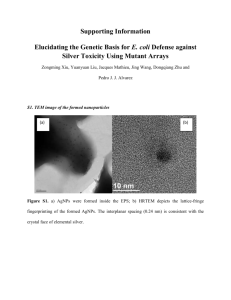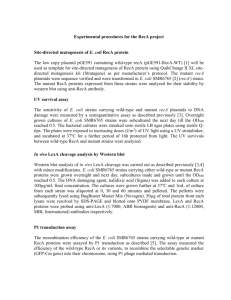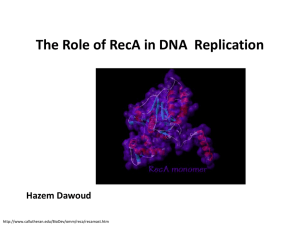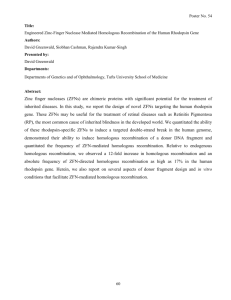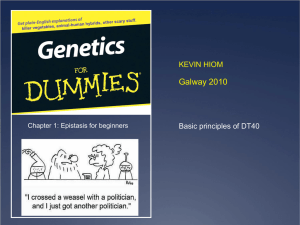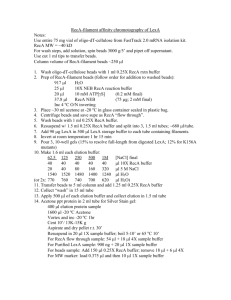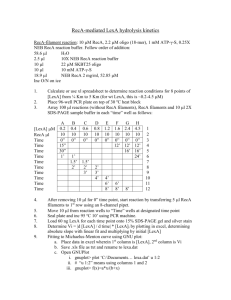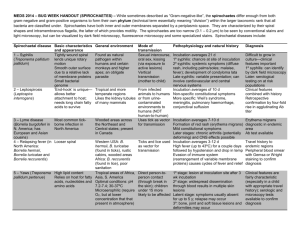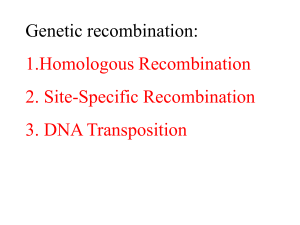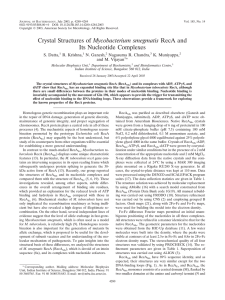The recA gene is the major gene in bacteria that promotes
advertisement
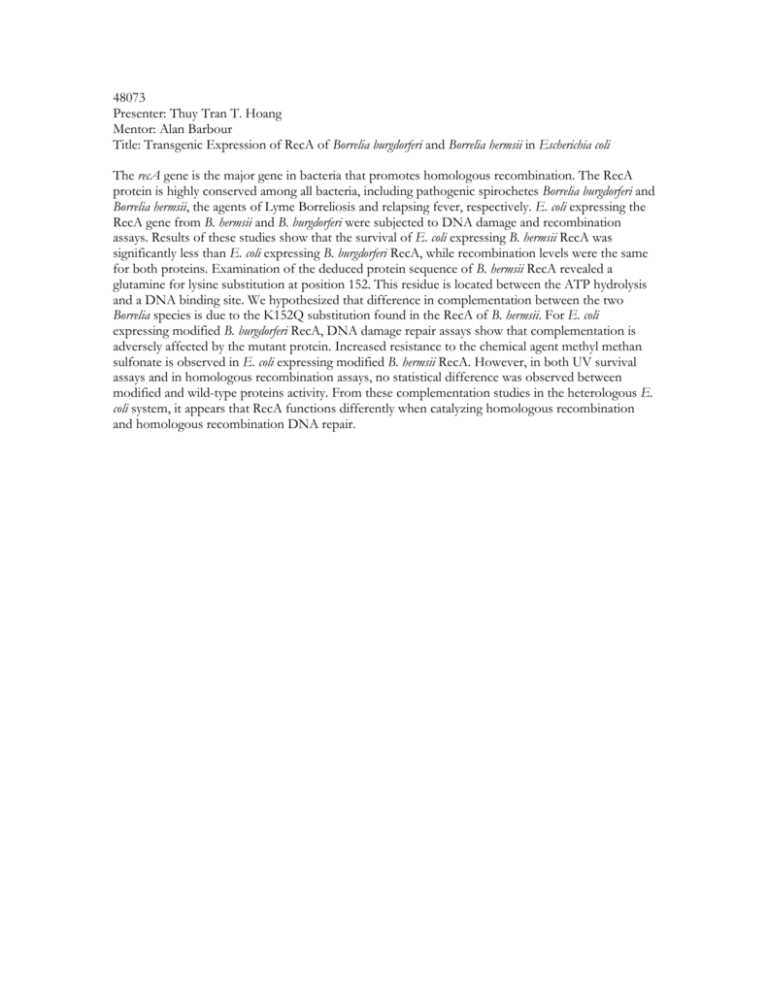
48073 Presenter: Thuy Tran T. Hoang Mentor: Alan Barbour Title: Transgenic Expression of RecA of Borrelia burgdorferi and Borrelia hermsii in Escherichia coli The recA gene is the major gene in bacteria that promotes homologous recombination. The RecA protein is highly conserved among all bacteria, including pathogenic spirochetes Borrelia burgdorferi and Borrelia hermsii, the agents of Lyme Borreliosis and relapsing fever, respectively. E. coli expressing the RecA gene from B. hermsii and B. burgdorferi were subjected to DNA damage and recombination assays. Results of these studies show that the survival of E. coli expressing B. hermsii RecA was significantly less than E. coli expressing B. burgdorferi RecA, while recombination levels were the same for both proteins. Examination of the deduced protein sequence of B. hermsii RecA revealed a glutamine for lysine substitution at position 152. This residue is located between the ATP hydrolysis and a DNA binding site. We hypothesized that difference in complementation between the two Borrelia species is due to the K152Q substitution found in the RecA of B. hermsii. For E. coli expressing modified B. burgdorferi RecA, DNA damage repair assays show that complementation is adversely affected by the mutant protein. Increased resistance to the chemical agent methyl methan sulfonate is observed in E. coli expressing modified B. hermsii RecA. However, in both UV survival assays and in homologous recombination assays, no statistical difference was observed between modified and wild-type proteins activity. From these complementation studies in the heterologous E. coli system, it appears that RecA functions differently when catalyzing homologous recombination and homologous recombination DNA repair.
